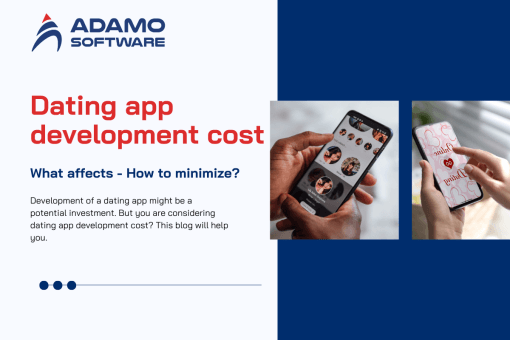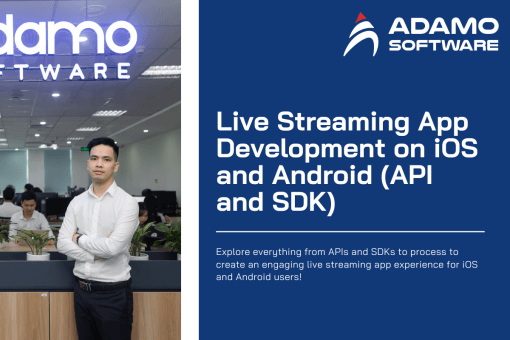Social Networking Analytics: The Ultimate Guide in 2026

It’s 2026 and some firms are still struggling to understand social networking analytics and how they may improve the success of their marketing efforts.
Given the importance of social media marketing in overall marketing performance, social networking analytics and campaign measurement tools are key sources of strategic marketing information. With so much consumer information posted on social media every day, social listening techniques have become an essential component in audience analysis, competition research, and product research.
The gathering and analysis of marketing and audience data to inform business decisions is based on social networking analytics. It’s the only definite way to gain insights that you can utilize to improve your marketing and product strategy.
I. What is social networking analytics?
Social networking analytics consists of gathering and analyzing data points to assess the effectiveness of a user’s social media accounts.
These are the metrics that will assist you in evaluating your social media marketing plan on both the macro and micro levels. They may help you evaluate client opinion, recognize trends, and anticipate PR issues before they occur, in addition to assisting you in seeing how social media is contributing to your bigger business goals.
You’ll look at likes, comments, shares, and saves to measure social networking analytics. However, you might also watch mentions and discussions of your brand or consumer insights by practicing social listening.
Social networking analytics assists you in doing all this math while also providing performance reports to share with your team, stakeholders, and boss to determine where you’re winning and where you’re failing.
II. Social networking analytics market size
The Social Networking Analytics market size is predicted to be worth USD 6 billion in 2024 and USD 17.57 billion by 2029, increasing at a CAGR of 24% during the forecast period (2024-2029).
In today’s business environment, social networking analytics is commonly regarded as an important business and marketing tool. Businesses throughout the world utilize social media analytics to acquire meaningful insights into customer attitudes and improve their services and product portfolios.
– The rise of Internet-connected mobile phones and tablets, together with the ever-increasing user volume on social media platforms, is driving the expansion of the social networking analytics market over the forecast period.
– By making social networking analytics tools more accessible to SMEs worldwide, incremental technology developments may open the way for much growth potential.
– The increased emphasis on consumer feedback has boosted demand for social networking analytics solutions, as they have more bargaining power in the market. The consumer is now available through social media platforms, reinforcing the need for social networking analytics tools for organizations worldwide.
– As of the second quarter of 2022, Facebook had 2.93 billion active monthly users. Indeed, Twitter reported that more than 800 million tweets are posted each day, confirming the global penetration of social media networks.
– Social networking analytics firms suffer from inconsistencies in analytical processes due to the significant installation effort and demand for crucial technological expertise. Additionally, data analysis and customization are both time-consuming and difficult. This is a key impediment to the expansion of the social media analytics sector.
Explore the lessons that build an MVP for startups.
III. Importance of social networking analytics
1. Value perception
Value perception (or perceived value) refers to the total customer opinion of your brand’s product or service and whether it can match the needs. The perception of value is critical in driving demand and the pricing point of a product or service. For example, customers will not be prepared to pay much for your goods if it has a poor perceived worth.
You may measure value perception by employing social listening tools and monitoring data from other digital marketing dashboards, such as Google Analytics. This can assist in guiding the material you generate to increase value perception and demonstrate how your product or service can address major pain areas.
2. Trendspotting
Trendspotting is the act of identifying emerging trends before they become popular. Keeping a careful check on your social networking statistics can assist you in accomplishing this. Among the trends that your social networking analytics can help you identify are:
– Which platforms are gaining or losing popularity and traction?
– Topics of interest that your target audience is discussing (as well as brand references in chats).
– Ad types that are appealing to your target audience.
– Influencers and brands on the rise in your area or business.
– Content types that your audience is most interested in.
Your social networking analytics data, when properly studied, may be a tremendous help in determining what you should publish more of, what types of content are growing more popular, and what your audience wants to hear more about in the future quarter of the year.
3. Setting social media goals
Social networking analytics can also assist you in determining which channels and content are performing well, allowing you to develop actionable, realistic social media goals and objectives.
Realistic is the essential word here. If you look at your social networking analytics statistics and see that your Instagram account is gaining 10 followers each week, going from 5,000 to 10,000 followers in a single quarter is not a feasible aim, even if you rework your posting strategy. Instead, set a goal of increasing your account’s followers by 20 every week and gradually increasing that target from there.
4. Brand sentiment
Brand sentiment illustrates how people feel about your brand. It encompasses all good, neutral, and negative emotions expressed online. Through sentiment analysis, you may examine and measure your brand sentiment by looking at your social networking analytics.
This ensures that your target audience is happy with your company and allows you to identify possibilities to make apologies to dissatisfied clients. You can also discover ways to improve your company.
For example, using sentiment analysis, you may notice that your customers are asking the same questions about a specific product feature, allowing you to update your FAQ page or help center. Sentiment analysis can be used in conjunction with competition analysis since it can identify new competitors and relevant issues that your consumers are talking about that you may not have explored previously.
5. Proving ROI
Finally, social networking analytics can assist in demonstrating the ROI of your social media marketing activities. Monitor your social networking analytics after each new campaign to see how the material is performing, if people are clicking over to your website, and if you’re producing new sales. This demonstrates social media ROI, allowing teams to gain additional buy-in and resources. UTM tracking and URL shortening are two methods for demonstrating ROI through analytics. You may then credit certain pipeline and purchase results to your social media initiatives.
Also read: What is Social Networking? How to Create Responsive Platform
IV. Discover types of social networking analytics
1. Descriptive analytics
This mostly focuses on collecting and describing social media data to comprehend a problem or scenario. We offer visuals and reports at this level.
These can be used to quickly answer any business-related inquiry.
2. Predictive analytics
This necessitates the analysis of a vast amount of social media data to forecast future actions and trends.
Running sentiment analysis on comments and language, for example, will be able to forecast users’ reactions to a specific brand or event.
3. Prescriptive analytics
Based on a study of previously gathered social media data, this sort of analytics recommends the best steps or activities to take.
Studying reactions to various social media crises to discover what form of communication is most suited to tackle a current issue is one example of this.
Another example is recommending methods to reduce the customer conversion process based on Google Analytics user habits.
5. Diagnostic analytics
Diagnostic analysis focuses on numbers such as views, followers, shares, likes, retweets, and so on.
This type of social networking analytics can help us rate the performance of posts and campaigns and identify the aspects that contribute to their success.
V. What metrics to track social networking analytics

1. Performance analysis
First and foremost, you must assess the overall effectiveness of your social media efforts. This includes social media metrics including:
– Impressions
– Reach
– Likes
– Comments
– Shares
– Views
– Clicks
– Sales
2. Audience analytics
As the most crucial component of a social media strategy, it is critical to fully grasp and define the target audience. Understanding the audience will aid in creating a positive customer experience with material tailored to what customers want and are looking for.
Audience data was previously difficult to measure due to its distribution across numerous social media platforms. On the other hand, marketers can use social networking analytics tools to better understand audience demographics, interests, and behaviors. AI-enabled solutions can even assist in the prediction of client behavior. They can also investigate how an audience evolves.
Audience analytics will include data like:
– Age
– Gender
– Location
– Device
3. Competitor analysis
Another important factor to consider is how your competitors perform on social media. How many followers do they have? What is their rate of engagement? How many people appear to respond to each of their posts?
You may then compare this data to your own to evaluate how you compare, as well as create more realistic growth objectives.
Examine how your standards compare to your competitors and consider altering your social media strategy to capitalize on opportunity gaps.
4. Paid social networking analytics
When you invest money in specific social media postings, you want to ensure that they provide results. This is why you must pay special attention to your paid social networking analytics.
Some of the most significant ad analytics to track are:
– Total number of active ads
– Clicks
– Click-through rate
– Cost-per-click
– Cost-per-engagement
– Cost-per-action
– Conversion rate
– Total ads spend
Each social media site will have its own dashboard to give you this information, but you may want to construct your own spreadsheet to track total advertisements and ad spending as well.
5. Influencer analysis
Tracking the success of these collaborations is critical for establishing ROI if you’re executing influencer marketing campaigns. You should keep track of the following information:
– Number of posts created per influencer
– Total number of interactions per post
– Audience size of each influencer
– Hashtag usage and engagement
This might assist you in determining overall engagement from your influencer marketing. If you have an affiliate marketing program, you can assign promo codes to each influencer to measure how many sales each partner generates.
6. Sentiment analysis
The final key aspect of social networking analytics to monitor is brand sentiment. We previously mentioned how social networking analytics tools can assist you in determining and measuring sentiment analysis. If you want to dig deeper, employ social listening to determine specific connotations associated with your brand.
Gathering and evaluating consumer sentiment can help you avoid guesswork when building a marketing strategy and determining which content will resonate the most with your target audience. This type of social networking analytics can also reveal the type of material that is most likely to positively impact consumer sentiment. If your social networking analytics tool discovers a surge in negative sentiment, take prompt action to address and solve it before it becomes a public relations nightmare.
VI. What are the Top social networking analytics tools?

1. Buffer
Buffer provides accurate social networking analytics for creators and brands looking to improve their social media strategy and monitor results without feeling overwhelmed.
3 best features:
– See how your accounts are performing in terms of key metrics such as engagements.
– Making strategy recommendations.
– Create professional reports with just two clicks.
Pricing: Starts at $5 per month; 14-day free trial.
3. Hootsuite
Hootsuite is an excellent social media management, listening, publishing, and social networking analytics platform. It assists you in determining what type of material is working for you, increasing the reach of your posts, improving the impact of your ads, and getting your entire social media team working together.
3 best features:
– Customize reports by selecting from over 200 metrics and exporting them in PDF, Excel, or PowerPoint formats.
– On Facebook and Twitter, track your customer service team’s reaction and resolution times.
– Integrate specialized tools like Brandwatch and Talkwalker to better track brand mentions.
Pricing: Starts at $99 per month; 30-day free trial.
3. Zoho Social
Zoho Social allows you to learn about your social media audience and how they interact with you. From a single dashboard, you can listen to various channels and respond in real-time. You can also go further into each post to see how many people saw it and how many people engaged with it.
3 best features:
– Create user-friendly reports from a massive library of pre-defined categories based on the demographics of your fans, influencers, or people reached.
– Compare the content formats that your connections are engaging with to the ones that you publish.
– For each post, compare the number of fans vs. other people.
Pricing: Starts at $10 per month; 15-day free trial.
4. Keyhole
Keyhole provides several trackers to assist you in monitoring your events, campaigns, influencer activity, brand mentions, and industry-specific social conversations. It allows you to track hashtags, phrases, and accounts, offering statistics for your company or competition such as reach, top posts, share of voice, and more.
3 best features:
– Predict the performance of your campaign using machine learning and make modifications as needed.
– Examine people’s reactions when they interact with your content.
– Manage influencer accounts and permissions in one place and track their performance.
Pricing: Starts at $99 per month; 7-day free trial
5. Rival IQ
Rival IQ allows you to track and compare the performance of many organizations across multiple platforms, including social media and SEO. It also analyzes Facebook and Instagram advertising and provides up to 24 months of historical data. This allows you to identify the general digital strategy employed by your competitors and learn from their techniques.
3 best features:
– Compare your profile to others in your field in terms of social metrics, hashtags, and content quality.
– Integrate Google Analytics to have a comprehensive view of your customer’s journey.
– With automatic insights, you can improve the performance of your Facebook and Instagram ads.
Pricing: Starts at $239 per month; 14-day free trial.
6. Google Analytics
While Google Analytics is designed for in-depth analysis of website traffic, it is also quite valuable for assessing the impact of social media as a marketing channel and traffic source. You can see how many visitors your site receives from each of the major social networks by going to Acquisition > Social > Overview. Using goals and conversions, you can connect this to your bottom line.
3 best features:
– Find social networks and groups where people are engaged with your content.
– Analyze conversions and eCommerce transactions to determine the value of social media as a channel.
– Examine how users arrive from social media through your site.
7. Tailwind
Tailwind is an Instagram and Pinterest social networking analytics tool that allows you to schedule content, monitor interactions, and analyze results. Pinterest analytics provides information such as the number of pins on your site, potential impressions, and followers for your boards. It displays basic stats for Instagram such as followers, posts, comments, and likes.
3 best features:
– Using the Hashtag Finder, you can find the greatest hashtags on Instagram.
– To create multiple posts from any site, use the browser extension.
– To save time, upload photographs in bulk using a drag-and-drop calendar.
Pricing: Starts $19.99 per month; free tier available.
8. Sprout Social
Sprout Social is a complete social media management and monitoring solution with several enterprise-level features. Its cross-channel social listening capabilities allow you to do a contextual and qualitative study of themes, hashtags, and keywords. Its graphic and easy reports can tell you how your content performs across multiple social networks.
3 best features:
– Analyze the performance of paid campaigns across networks.
– Get a report on your social media profiles as a group.
– Examine your team’s performance (work completion, response rates, and so on).
Pricing: Starts at $249 per month; 30-day free trial.
9. Audiense
Audiense offers one of the most in-depth evaluations of Twitter profiles. You may learn about the location, language, interests, and impact of your followers, peers, or competitors. This social networking analytics understands your target audience by using machine learning on social data such as affinities and demographics. You can then directly engage these audiences at scale.
3 best features:
– Create your own chatbot and engage customers using Twitter direct messages.
– Analyze your followers thoroughly and use the results to establish communities.
– Examine historical and real-time Twitter chats.
Pricing: Starts at £39 per month; free plan available.
10. Quintly
Quintly is an enterprise-level social networking analytics tool that tracks your social media participation across all major platforms. You may mix and blend dozens of customizable metrics to create flexible, shareable dashboards. You can compare numerous pages belonging to you or your competitors against pre-set benchmarks or each other by adding multiple pages belonging to you or your competitors.
3 best features:
– To successfully set up and measure social KPIs, choose from 350+ measures.
– Export data in CSV, XLSX, PDF, and PPTX formats, and send automatic reports.
– To extract data into bespoke dashboards and combine it with a BI solution, use Quintly’s API.
Pricing: Starts at $449 per month.
11. Talkwalker
Talkwalker provides limitless free hashtag and keyword searches across major social media platforms, news, blogs, and forums. It offers a wide range of data such as mentions, sentiment, discussion distribution, top posts, and more. Overall, Talkwalker is an effective brand monitoring technology that allows you to evaluate sentiment and compare your performance across channels.
3 best features:
– Monitor what customers are saying about your brands, products, events, earnings calls, or campaigns in real-time.
– Map your mentions on a globe map.
– Obtain demographic information on your target audience, such as age, gender, and occupation.
Pricing: Custom pricing for SMBs and enterprise companies.
12. Cyfe
Cyfe is a unique dashboard social networking analytics tool that you can populate with stats from dozens of marketing products. Its social media feature lets you sync all the major networks and generate overview reports for the accounts you administer and want to track. It provides 50 widgets for tracking reach, impressions, clicks, check-ins, and postings on Facebook alone.
3 best features:
– A completely customizable dashboard.
– Configure email and SMS notifications to warn you when thresholds are exceeded.
– Using the Twitter search widget, you can keep track of brand mentions and rival activity.
Pricing: Starts at $19 per month; 14-day free trial.
VII. Choose Adamo as Trusted Social Networking Software Development Company
Working as a premier software development company specializing particularly in social networking industry and live streaming video platforms, Adamo Software has lots of experience in building lucrative software solutions in media and entertainment software development fields. We have partnered with many media and entertainment companies across the globe, and successfully launch money-making and intuitive solutions. If you want to build bespoke software solutions in media and entertainment, feel free to contact us.











